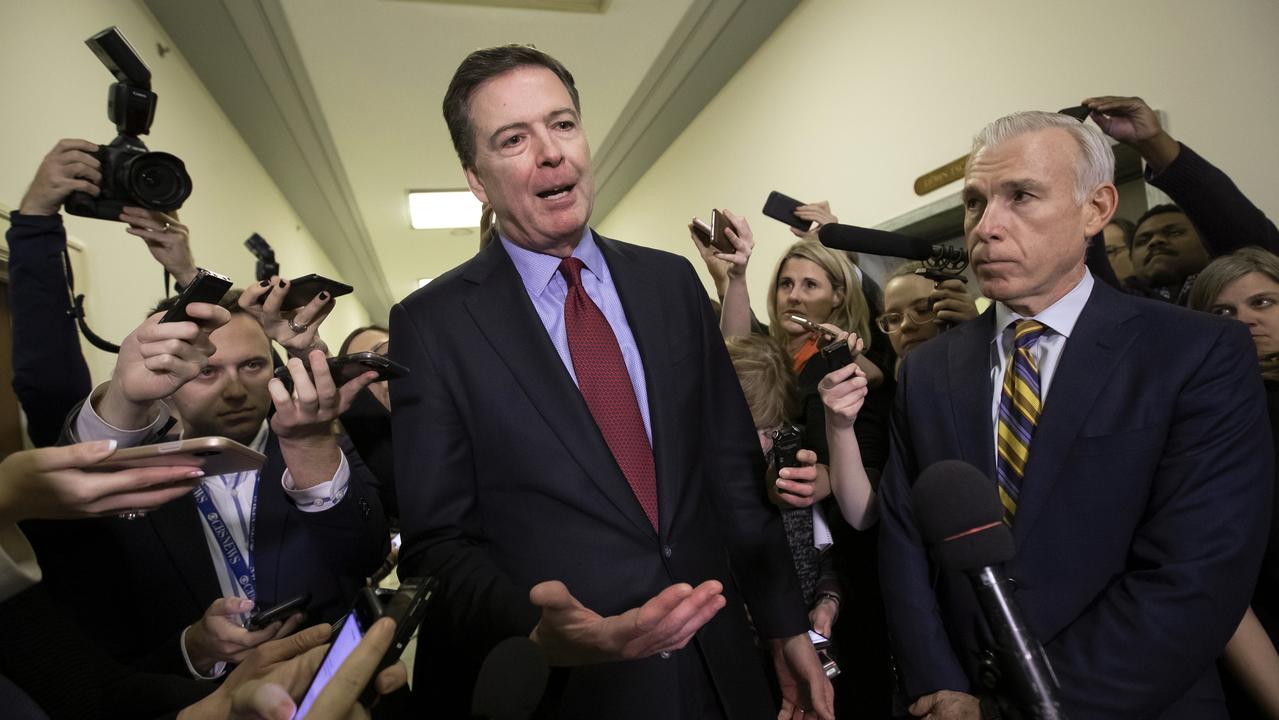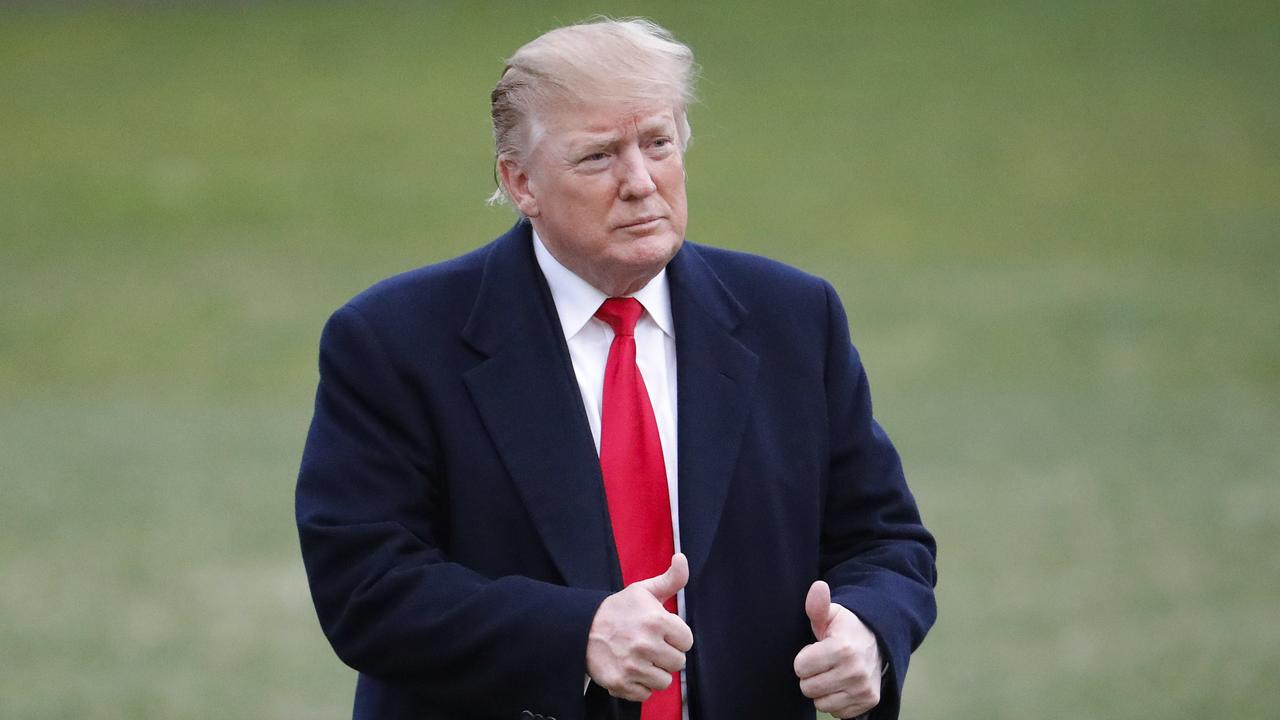Reserve Bank’s Glenn Stevens on the ups and downs of his tenure
Outgoing RBA chief Glenn Stevens looks back to banking’s golden age and explains the limits of monetary policy.
Glenn Stevens was appointed Reserve Bank governor in the closing stages of what he now looks back on as a “golden period” for both central banking and the global economy. The bank he is bequeathing his successor, Philip Lowe, is conjuring with a much more vexed world
In September 2006, as he took up the post, the world of central banking looked easy. “It seemed as though just gentle tweaks on overnight interest rates were enough to keep everything on an even keel.”
After the painful 15-year period through the 1970s and 80s when inflation averaged almost 10 per cent, central banks the world over had adopted variants of New Zealand’s model, which gave them formal independence from government to use their control over short-term interest rates to achieve a single target: keeping inflation below an agreed level.
In an exclusive interview with The Australian and The Wall Street Journal, Stevens says the Australian framework was never quite that simple: the Reserve Bank was also required to achieve full employment and a stable currency while its inflation target was a band, 2 to 3 per cent. This was to be achieved on average over the course of the business cycle, which could run for years. It was not a rigid goal, as adopted by other central banks.
“It was never an obsessive ‘inflation only and nothing else’ — we never had that model,” he says.
However it was put to the test early in Stevens’s term as the resources boom set inflation rising. The jobless rate had dropped below 5 per cent for the first time since the early 70s and was heading for 3 per cent, forcing business to bid up wages in order to hire and retain staff. Inflation reached 5 per cent.
In his first 18 months in the job, Stevens pushed up the cash rate five times, including memorably in the midst of the 2007 federal election, which was seen by some in the Liberal Party to have contributed to John Howard’s election defeat.
By early 2008, the cash rate was up to 7.25 per cent, its highest since 1996, while standard home loan rates were pushing 10 per cent.
Stevens does not believe the bank’s hard-won independence was ever in peril. “I think that the framework (a) served us well, and (b) was reasonably well understood by most informed people. It’s never popular raising rates.
“The politics of raising rates when the economy’s strong, they’re always somewhat challenging. This is why you have to have an independent central bank, because the challenges, they’re not necessarily easy, but they’re better met with this particular institutional set up.”
With the collapse of Lehman Brothers on September 15, 2008, the RBA was thrown into reverse, slashing rates to just 3 per cent within six months. They were frightening times.
“The way people retreated from accepting any risk at all, wouldn’t deal with each other because they didn’t know the state of other people’s balance sheets, you know, a very serious closing of many capital markets, that’s certainly an event that you don’t want to live through again,” he says.
But at the same time, central bankers are taught to deal with financial crises. “I would have thought ahead of time that central banks know how to provide liquidity to markets and, actually, we know how to co-operate with each other within the limits of the powers that we have,” he says.
The US Federal Reserve made abundant quantities of US dollars available to other central banks to ease the liquidity freeze, containing the damage, while domestically central banks provided liquidity to financial institutions against collateral.
“That’s what you’re supposed to do and that’s what we’re trained to do,” Stevens says. “This was a bigger event than others have been for a long time, but I wasn’t surprised by the willingness to co-operate or the speed of response.”
Stevens pays tribute to the response of the Rudd government, particularly for its first $10 billion stimulus package, launched in October 2008. “That first one was probably the most effective and best-timed fiscal stimulus we’ve ever seen,” he says.
“From that episode of fiscal policy, I think you could quite respectably draw the lesson that very quick and early and targeted stimulus was quite effective.
“Another lesson you might draw was that the road back to fiscal consolidation, once it’s clear that the immediate danger has passed, is actually a very difficult and long road.
“I think it’s probably become harder in a world where terms of trade are weak, or weakening at least, where inflation is low and where the nature of public discussion about particular measures is so partisan, as it is these days,” Stevens says.
It was later, once the smoke had cleared, that central banks found themselves in uncharted territory.
“It was the subsequent period where it morphed from being an emergency liquidity response to put a floor under something that could’ve been a catastrophe.
“As time went by, then it became more of a monetary policy question: ‘How do we kind of restore demand?’
“And that’s, I think, where the more unprecedented things have really been done and where there’s room for debate about how effective we could ever have expected that all to be.”
The fact that eight years later the Reserve Bank is still cutting interest rates and its peers in the advanced world are experimenting with negative interest rates and considering even more radical solutions as global inflation wallows close to zero shows to Stevens that “there is only so much that monetary policy alone can do”.
“I don’t think you could say that the Federal Reserve or the Bank of Japan or the Bank of England or the (European Central Bank) and maybe some others were negligent in trying to think about new things they could do to help.
“The evidence is that they’ve been pretty inventive, actually, in deploying balance-sheet tools and even most recently negative interest rates. So I don’t think there’s a kind of failure of imagination or willingness to act.”
The reason it has not been more effective is that the crisis left such a residue of debt in financial institutions, governments and other borrowers.
“The central bank can help in the deleveraging process. It can bring rates down to sort of speed up the adjustment, but it can’t sort of magically wave away the leverage that was there that people have to fix. It can’t make people borrow money if they’re not inclined to.
“The central bank action in the heat of the crisis put a floor under something that could’ve been much, much worse, but it was never reasonable to think that they were going to kind of get things back to trend that easily given the other stuff that was facing us at the time, and it would be unrealistic to think otherwise.”
“We’re in a world that’s more complex than the particular golden period for central banks, which actually wasn’t that long in the historical sweep,” Stevens says, referring to the period from the early 90s to about 2006.
“We should never have really been lulled into thinking that it could be that easy indefinitely, because it hadn’t been in the past, and, of course, it’s proved not to be that easy or that straightforward subsequently.”
Australia’s post-crisis performance has been far superior to that of other advanced countries. It has been helped by the resources boom, which boosted business investment and the price of export goods both before and after the financial crisis.
Export prices have been falling since 2011 and the investment in building new resource projects is running down, but the volume of resources that Australia is exporting is rising as new mines and gas projects come on stream.
Stevens says investment in the resource sector will probably drop back to a sustainable rate in about a year, while exports of liquefied natural gas will be picking up over the next few years before full production is reached.
“Ian (Macfarlane, the previous RBA governor) was talking about things happening in China having implications for Australia’s terms of trade in about 2004 or 05. And the next governor is still going to be thinking about the final bits of that whole event in 2017. Quite a big event.”
Stevens believes the RBA has played its part in Australia’s good performance. Australia’s growth over the past decade has averaged 2.8 per cent, compared with just 0.9 per cent in the G7 advanced countries. Australia’s inflation has averaged 2.3 per cent, compared with the 1.7 per cent average of the advanced world.
In a speech last week, he noted that Australia’s growth and inflation have been a lot less variable than elsewhere in the advanced world, despite the huge swings in our export prices. Ironing out the volatility in the economy is a sign of the RBA’s success during the decade that Stevens has been at the helm.
Although he believes monetary policy has become less effective, it still has some impact, and the rate cuts this year have been calculated to support growth.
“We still have some spare capacity that we could use up and it would be good if we could do that.
“As you know, whether monetary policy could just dial that up is something that I am a bit dubious about. We should do what we can do, but I’m not sure that what the central bank can is in itself sufficient.”
He believes it is up to government to do more to stimulate economic growth with reforms to boost productivity. This has been a constant theme for Stevens over recent years and is becoming sharper as he prepares to leave. So why has so little been achieved?
“Is it that we don’t know what needs to be done? Is it that we don’t have sufficient of a burning platform to prompt us to act? Is this unique to us?” he says.
“When I look around the world … we’re clearly not the only country that has a rather fractious political discussion, difficulty in building support across the community for difficult things that might need to be done.
“When you think back to the period that we now look back on as the golden era, it probably looked a bit more messy when you were living through it than it might, looking back. But you had strong leaders, for sure. You had a sense that we had no choice, we’ve got to do it. And I think you also had the opinion-shapers in the media and bureaucracy and politics (who) were ready.”
He recalls the work of The Australian’seconomics editor Alan Wood, the efforts of Liberal backbencher Bert Kelly and the thinking of the predecessor organisations to the Productivity Commission — they had all been building the case for reform. It is in that tradition that he has used his position to speak out.
“I’ve always felt our responsibility was to do our job, be clear about what we can’t do and to lend our support within the limits of our remit to those who are trying to push the case in these other areas. I feel we’ve done that,” he says.
“We stand for sensible economics, telling the truth, trying to get people to see the issues. We don’t weigh in too much further, because I think we do have a fair bit of credibility, but you don’t keep that credibility if you don’t use it wisely.”



To join the conversation, please log in. Don't have an account? Register
Join the conversation, you are commenting as Logout